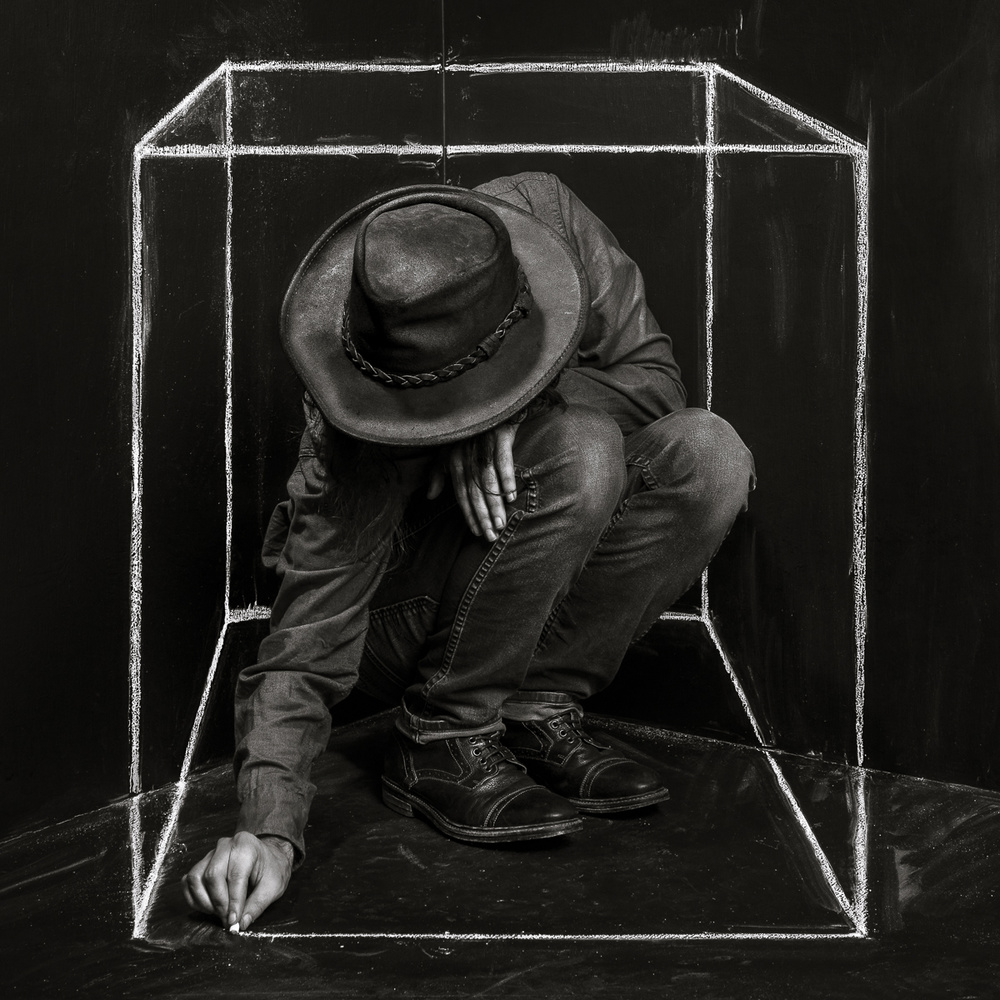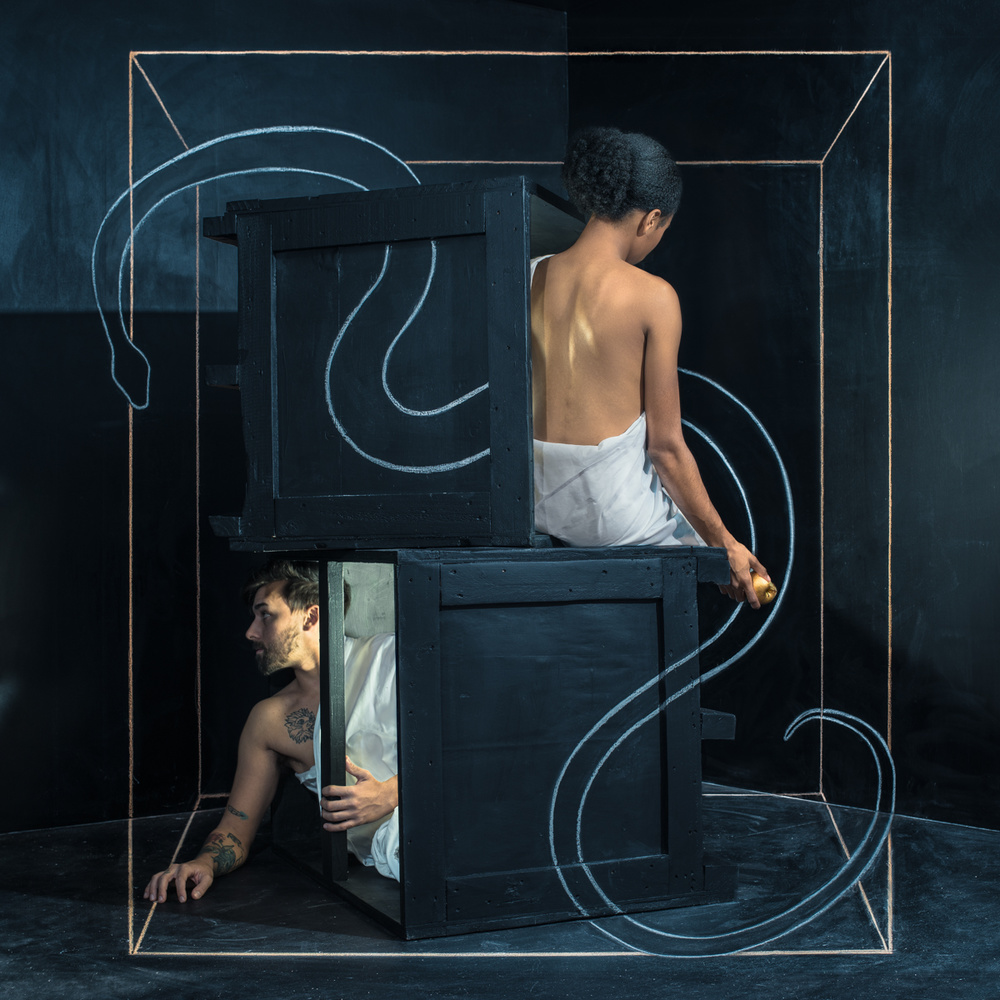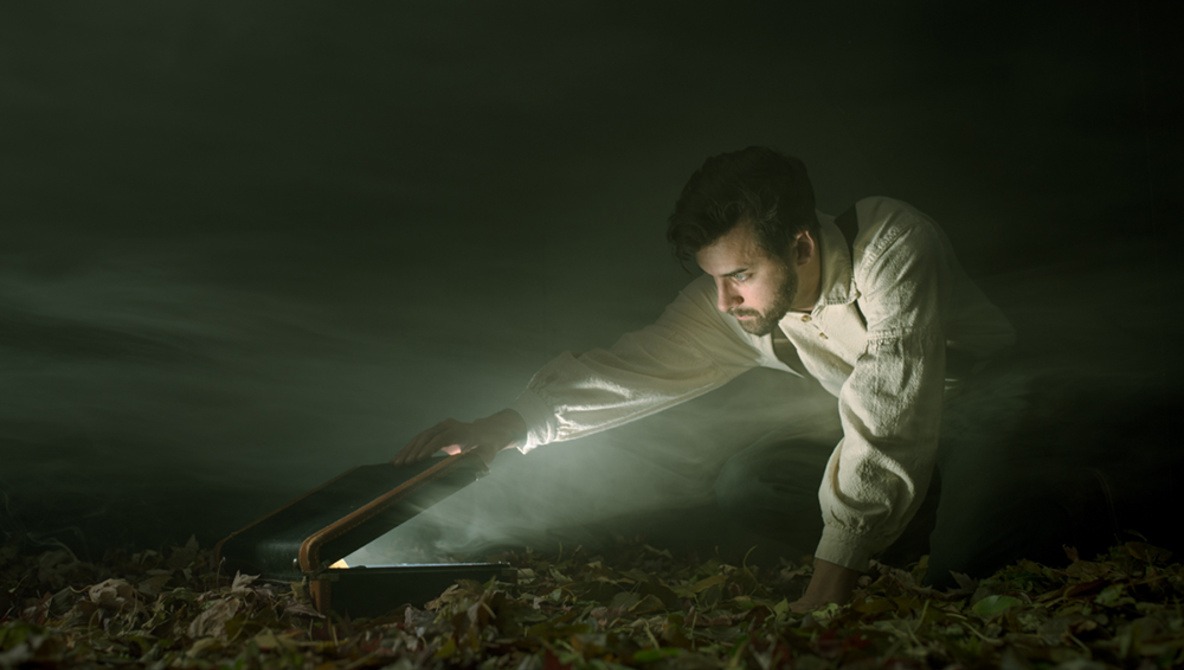Abstract truths and concrete reality are where John Dykstra strives to create photographs. At first, people may confuse Dykstra’s work as images and not photographs, but they would be wrong.
I like to use three words when dealing with content developed with a camera. The first is "picture", which to me is something that was just snapped with no real effort made to create art. A picture can still be exciting and artistic. The second is "photograph". This is where an attempt was made to create something that required controlling light, subject matter, composition, and various other attributes. And finally, the third term I like to use is "image". To me, an image is something that started as a photograph and was heavily developed using post-processing. All are fine in their own ways, it's just a way for me to categorize for my personal use.

When I saw Dykstra’s work for the first time, I naturally thought that he was creating images using a fair amount of post-processing. Even if he were, I would still find the images to be impressive. I’m a photographer that uses post-processing to adjust, not to create images. I wish I had the skills to create images using post-processing, but I don’t. However, when I learned that Dykstra was creating these photographs without digital manipulation, I was delightfully surprised.

Dykstra takes the flatness of a photograph and uses anamorphic illusions to trick the eye into seeing depth and dimension to his photographs. He captures this in-camera instead of digitally manipulating the photograph in post-processing. Dykstra explains “I didn’t even pursue it because I was tired of seeing Photoshop composites. I pursued it because it was, first and foremost, effective in telling my story and carrying forth my vision of the world.” Dykstra has a deep interest in the personal perspective or viewpoint on life. And as Dykstra told me "...the way we experience reality differs from person to person.” so, therefore, each of us experiences his photographs differently. Yes, I realize this is true for all art. However, I find that Dykstra’s photographs do not scream a message to the viewer but instead let the viewer develop their own perspective.

Dykstra doesn’t just create his photographs for the message contained in his work. “I’m very drawn to the process because of the creative problem solving involved. It can be a challenge, but I love how the process gives me permission to create photographs that I had never seen aside from my own imagining,” explains Dykstra. “A solution for one problem might open up a world of opportunities and ideas you wouldn’t have arrived at otherwise. It’s exciting. It forces you to work outside the box, and then it gets your creative juices pumping as well.” I think this is something more photographers can practice and that can lead them to create more interesting photographs. Exercising this problem solving develops a skill set the photographer can pull from when new obstacles arise later on. This isn’t to say the Dykstra doesn’t use any post-processing as he explains “First off, I want to clear the air by stating my opinion that there is a difference between editing and manipulation. I still adjust tonal curves, contrast, white balance, sharpness, etc. Manipulation, on the other hand, has to do with moving pixels or introducing foreign visual elements from a different photograph.” Dykstra also told me that he didn’t go completely manipulation free until the end of 2017. He likes to hold himself close to the standards of a professional photojournalist when it comes to post-processing.

Problem-solving doesn’t mean Dykstra is a protectionist when it comes to defects in his photographs. It is quite the opposite for Dykstra, as he tries to embrace the defects and would love to be able to master defects such as overexposure, improper white balance, diffraction, fringing, and aliasing for their expressive potential. As Dykstra explains “We’ve seen how many prominent artists from art historical movements were unpopular in their time for the very reason we love their work today. They abandoned the conventions and standards of their time, to win their freedom to experiment and explore new territory. Critics saw them as amateurs for all the perceived defects in their paintings, but they wound up pushing the boundaries of painting to influence countless generations. Post-impressionists, for example, were seen as outlandish because their works appeared unfinished, but now we have movie after movie about the life of Vincent Van Gogh.” Perhaps more photographers should embrace this philosophy and set their photographs apart from others.

I asked Dykstra if he saw his photographs as a documentation of his combined artistic efforts. A way to conveniently share those efforts, or does he see the photography as equally artistic in nature? Dykstra told me he sees it as both. While the sets are created specifically for the purpose of the photograph they could be considered a piece of art. And when the photograph is created using the art developed for the set, then the photograph itself becomes another piece of art. But Dykstra doesn’t keep the scenes created for the photograph. They are either disassembled or destroyed. “But realistically I conceive the photographic prints as art objects themselves, and that’s how I approach them.” Dykstra adds “All the markings on the glass and walls, the anamorphic illusions painted on set, the entire thing is designed with the surface of the print in my mind. Especially speaking in terms of creative vision, without the photographic dimension, the painting, drawing, and set building alone would fail to express the entirety of my vision. The work I do speaks specifically through and upon the photographic medium.” So while the art of the scenes permits the creation of the photograph art, the final piece of art is the photograph itself. As Dykstra mentioned earlier, he uses the anamorphic illusions to create his art that requires both the scene art and art of the photograph.

As for the equipment Dykstra uses, he told me he is currently shooting with a Pentax 645Z because he loves to print giant photographs with incredible detail. For lighting, he relies on three Paul C. Buff E640s. Along with the Buff lights, Dykstra loves his LTM Pepper 100 watt fresnel tungsten light. Of course, there is one piece of equipment that is critical to his anamorphic illusions. I’ll let the readers guess what this piece of equipment is by posting your guesses in the comments below. I’ll follow up with the answer after a few guesses are listed.







Great article! I really like his work!
Thank you!
I get so sick and tired of this No Photoshop Esotericusbullshiticus! Which is why I wrote the following prose, going on 10 years ago. http://dizeman.com/photoshopyesno/
Dear Jon, I read your prose. I agree with a lot of what you write, and I think artists definitely should "create or build without restriction or the confines of definition." We should be free to express our creative visions in the most suitable means possible! For me, right now, practical effects and minimal to zero manipulation best deliver the message of my vision.
I love composite work and the things that are possible with photomanipulation. I used to do a lot of it myself. One of my favorite photographers is Noell Oszvald, who composites several images together in every one of her minimalistic images. There are several other photographers whose work I admire, who also use digital manipulation to create their work.
There are a lot of great ways of going about photography and this particular path is mine.
As I stated in the article all forms of artistic expression are fine and it doesn't matter if post processing or in camera or lighting or any other form is used. I posted an article about John Wilhelm who uses lots of post-processing. You might want to check it out https://fstoppers.com/composite/dad-poses-his-children-out-world-images-.... This article was about John Dykstra's approach to making art. It was not a Photoshop vs No Photoshop article.
I think it's more about people discounting composites as not true photography. No matter what you do to the image, in the end, people see a photo. They like or don't like it. If movies have to green screen everything to tell a story, no reason why we should be left out because we can't afford to have sets built. I would spend more time going after people that pose dead insects or drugged frogs.
link doesn't work. finally an article about a white male photographer that inst centered around race
Finally a comment that injects some reactionism into a discussion about artistic approaches.
thank you. i hate PC correct bs because it goes past what it should be about, the Art
yeah, this is good
Very interesting use of chalk. Adds perspective and a certain vibe at the same time.
Is the critical piece of equipment a projector? Or maybe some tether tool that connects to a tablet or a phone to see what he's doing from the camera's POV? My bet is on a projector tho.
I think the critical piece of equipment is his imagination.
I thought about that one and I was like "Nah, he said piece of equipment".
While I really love his work and respect what he is doing I think we have to move away from this holier than thou stance in regard to using Photoshop. In my opinion it matters not a jot how the image was produced as it should stand on its own without the need for a backstory. This of course excludes documentary images which must be shot with no manipulation,mmmmu. People who like John’s work may be interested in the work of Scottish Artist Calum Colvin who creates complex 3D scenes which he then photographs.
http://www.calumcolvin.com/Burnsiana.html
These are wonderful
Wow!
Yes!!! More of those please
Mr. Turney, your definition of an "image" does a terrible disservice to all photographers who made great and wonderful IMAGES before the age of Photoshop.
of course, Mr. Dykstra is making images with his camera! and he's doing it the old fashioned way - in the studio, instead of in the computer. point is, your definition seems awfully restrictive to me.
as Mr. Robinson notes, how the image was made matters much less than the image itself.
congrats though being open-minded about it enough tow write the article.
Hi, flexible fotography. I realize that my definition of image and photograph are only my way of segregating content into different categories. I also do not mean to imply that a person who creates a photograph is not an artist. Controlling composition, lighting, subject matter, etc. does make a photograph a work of art. That's why I tried to distinguish between a picture and a photograph. I also didn't mean to offend anyone who develops content using some sort of post-processing where the digital file is modified. When I say photograph and image, I only differentiate them for the purpose of the method of reaching the end objective - NOT the quality of the work or the ability of the artist. I also understand that there doesn't have to be a thick line between the two.
I try to use pictures, photographs and imagines in my writing here to help provide a way of differentiating methods and not as a way of judging.
first, you give the difference between a picture and a photo as a value judgment - and rightly so. (although, of course, i have some "snapshots" that rise to the level of being "photographs".) if you follow it with another comparison, that seems also like a value judgment.
if the second tier is now simply making a differentiation between equal methods, you could make that clearer.
i developed the idea of flexible fotography to counter the trend to artificially compartmentalize the field of photography. so, i don't see a need to differentiate at all between the means used to produce a photo. again i refer to Mr. Robinson's comment.
btw, i use photograph and image interchangeably :-)
The difference between a picture and a photo? This is why I created the word ESOTERICUSBULLSHITICUS way back in 1979. Now, the difference between a snapshot and a created work, I can go along with. But picture and photo? Stop, you're giving me hives.
Very cool art ♡ Thanks for the article.
You're welcome. Should have more coming out in the next couple of weeks.
I do a huge amount of post production editing. I do so because it satisfies my artistic wants and needs. I do not bad mouth anyone who does otherwise but I use PPE as a means to an end. The creativity of Dyksra is truly amazing however I intend to continue pursuing my concepts which are satisfactory for me.
I understand this article is not the persuasive kind. For me is an excellent information/opinion article. Everyone can make photos as pleased. Just read, analyse and produce your own stuff the way you like.
Thank you for the compliment on the article. That is exactly what I wanted it to be.
Has no one read the article?! Dykstra emphasizes that he is not ANTI-PHOTOSHOP!!! This approach is just where he is now. He's done photo manipulation but decided he wanted to shoot with a minimal amount now. Stop putting your insecure feelings on your sleeves about how you choose to shoot/manipulate your images. How you choose to create is as much your right as it is Dykstra's. The problem begins when your insecurity about what you do creeps into your critique of others.It shows a sense of "guilt!" Photo manipulation doesn't make you less of an artist any more than no photo manipulation. The idea is to create, and to create with as much imagination as possible. That's it! Just make it interesting no matter what tools you use and be confident enough in what you've done to say; "I did it this way because "I WANTED TO!!!"
Exactly!
Awesome.
Love this! Takes me back to film days... or is it daze, at this point? Love the creativity, love the concept and intentions within the images!
I'm glad you enjoyed the article.
I view the entire digital realm as a single system. This means, camera, lens, sensor, software in the camera, computer, graphics card, image processing software, monitor, etc. Would a painter limit their art to not using pigments, but only brushes and canvas?
Art is art no matter how you create it. In the end it is just dots on a page or screen. What does it matter how you got there? Art is in "the eye of the beholder."
Agree. The process shouldn't determine if it is art or not.